From the brain to the bathroom: here is a story about Creativity
Yes, yes, the bathroom! Don't jump to conclusions too quickly. Bear with me for a few more minutes.
Einstein at the Patent Office, shower effect, daydreaming and bla bla bla
We all have read stories or listened a podcast about the “shower effect”, how the menial work at the patent office made Einstein so prolific, Sheldon Cooper working at the Cheesecake Factory, freeing the prefrontal lobe to be more creative, right?
“Been there, done that, it’s trite stuff Mauro!”
Maybe.
The truth is that I'm learning not to take everything for granted, and besides, why deprive myself of a good opportunity to learn something firsthand leaving my curiosity to roam free? Plus, I was thinking about this since a few weeks ago.
Once again I’m going to tell you a story by following a chain of thought that will lead us from the brain to the bathroom.
The Creativity Lab in our Brain
First of all, according to this article (Where in the brain is creativity? The fallacy of a creativity faculty in the brain) there is not such a thing like a “uniquely creative cognition that (1) is distinct from all other kinds of cognition and (2) has a proprietary neural substrate.”
So, looks like that, in our brain, Creativity is nowhere and yet “is everywhere and multiply realizable.”
Ok, I will humbly try to have at least a faint idea of how it works.
Here what I found.
In our brain there are 2 networks that “lights up” alternatively if we are deeply engaged in a task OR we are relaxed.
The Default Mode Network definitely got my attention. I also tried to map the main areas of the brain involved in DMN.
I hope it is correct, if not, please drop me a line and shed a light in the darkness.
In any case, that is incredible!
From this, I may think that the next creative breakthrough isn’t in hustling harder, brainstorming longer, or staring at a blank page until I have an epiphany. Instead, it’s in allowing my mind to wander. The famous daydreaming, a kind of mortal sin in our hyper-productive age, is a powerful tool for creativity.
Nothing that some guru on YouTube hasn’t already explained profusely, right?
However, that given, the sentence “I’m busy creating” should be an oxymoron. 😁
Recap
Thinking without thinking, doing without doing
Apparently, allowing your mind to “let go” is the quickest and best way to activate DMN. These concepts are not always easy to grasp but there is plenty of literature about them, particularly in eastern philosophies.
As a Tai Chi Chuan enthusiast I was already aware of the Chinese concept of Wu Wei that Alan Watts define as “not forcing”. To this, I added the Japanese concept of Mushin.
A quick note: this is something related to:
the Flow (the concept by Mihaly Csikszentmihalyi)
a past issue of this news letter
The path to creativity goes through household chores
It is self evident that simple and repetitive tasks are the best way to activate DNM and the natural next step is to consider chores.
Chores are those low-demanding and repetitive tasks that we (well, most of us) hate to do. Despite that, chores require minimal conscious effort and can allow the DMN to activate.
Now, if that were the case, everyone would be extremely creative, innovation would flow abundantly, and perhaps everyone would be happier, right?
Why isn't it like that? I may be wrong, but I think I have an answer to that.
Let me be clear, this happens to me more than a few times. It depends to the chore I’m going to do.
Does this sounds familiar to you?
As the chores have to be done (we are not savages!!!) I experimented various systems to make the most out of chores and, if not to liking, at least to do not hate them.
After a few miserable fails and a lot of “meh”, I arrived to this.
If you decide to give this a try, I bet you’ll be surprised how powerful in the step 2.
Plus, rhythm and repetition make magic.
Of course, is not a one-time thing, it’s a process but, hey! Chores never stop, so you’ll have plenty of occasion to practice.
Finally, here comes the Bathroom!
Among all of the different types of chores, I found that, when it comes to let my mind wander, cleaning the bathroom is by far the most prolific and satisfying.
There is something in the combination of white, silence, smell of detergents and texture of the ceramics that make super easy to enter in a state where I can clean without thinking.
I believe that the secret is in the movements. I started paying attention to this when I started practicing Tai Chi Chuan and soon became an habit.
Looks and sounds confusing but it is not.
Not to mention the huge satisfaction and delight of having a clean bathroom!
Let me finish with a few of my favorite hacks:
Dishes and sanitary ware are both made of ceramics, try to use dish soap rather that more aggressive specific detergents
For those stubborn stains or limescale deposits I found that rubbing them with a dishwasher tablet may work wonders
After rinsing, I dry everything with rags made from old sheets
I clean the floor by scrubbing the whole surface and the corners with soap and a broom, then I rinse it with an old towel and hot (very hot) water
I always follow this order: shower, bidet, mirror, basin, toilet and floor
Do you have some suggestions?
Let me know!
That’s it for this month.
Embrace your DMN, be super creative and… Enjoy your chores!
See you in March.
Ciao
Did you like this newsletter? Please consider to give it a nice like and to forward it to your friends. That would be so helpful and I’m grateful.
In case you are not yet subscribed, you can do it here:
Mauro
PS: a kind of Colophon
Just a few words about where you can find some of the things I do/did:




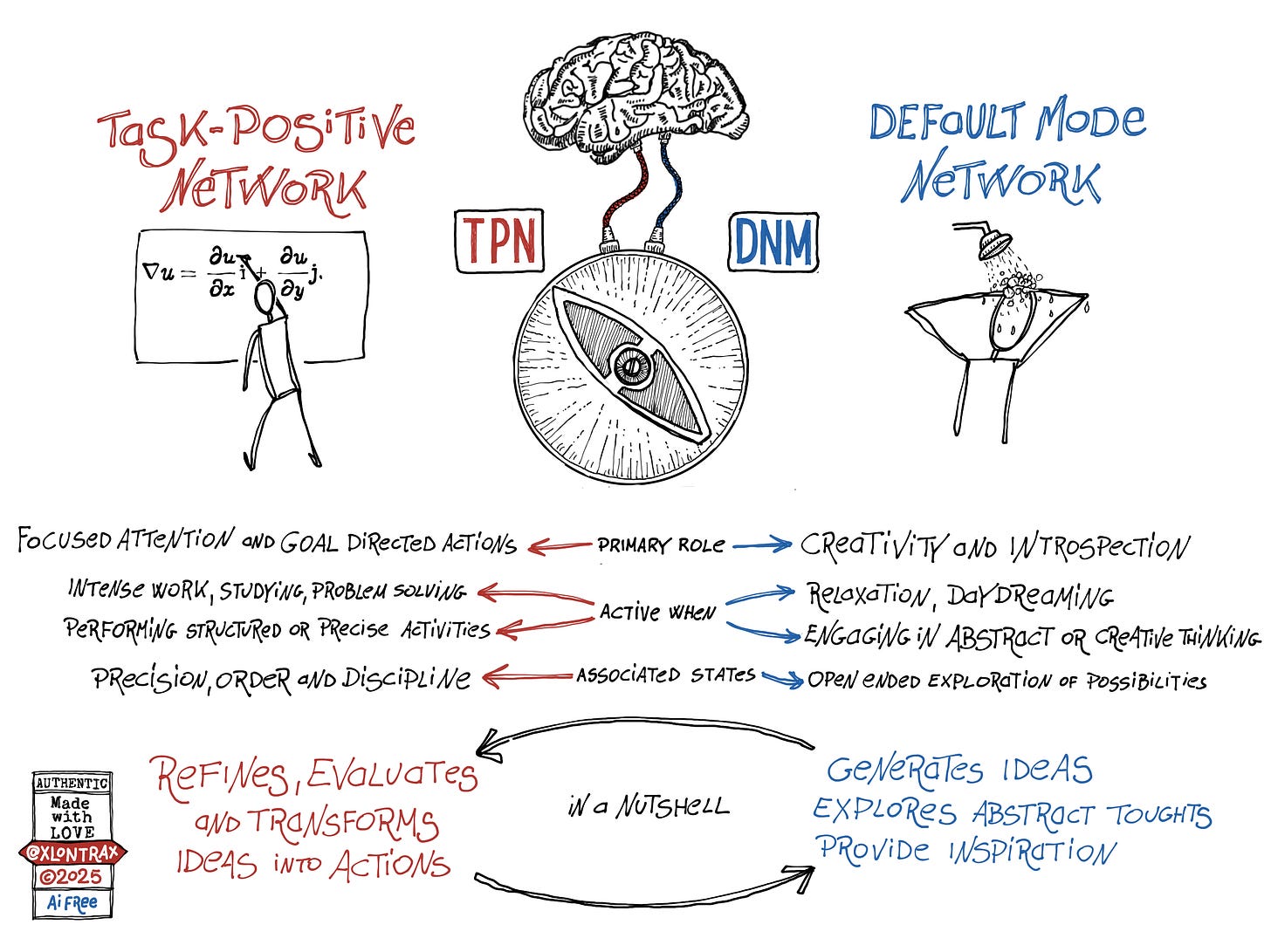
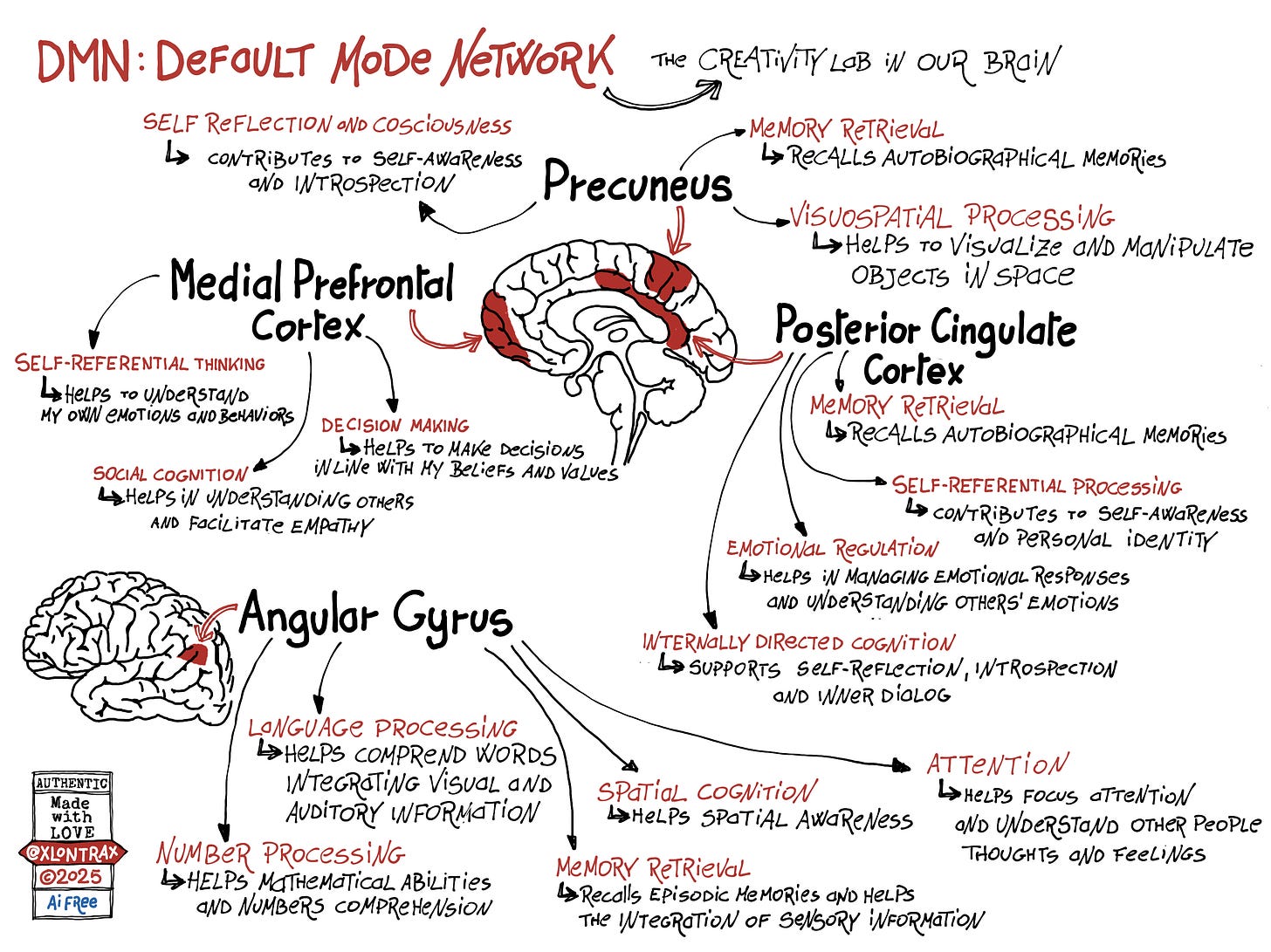
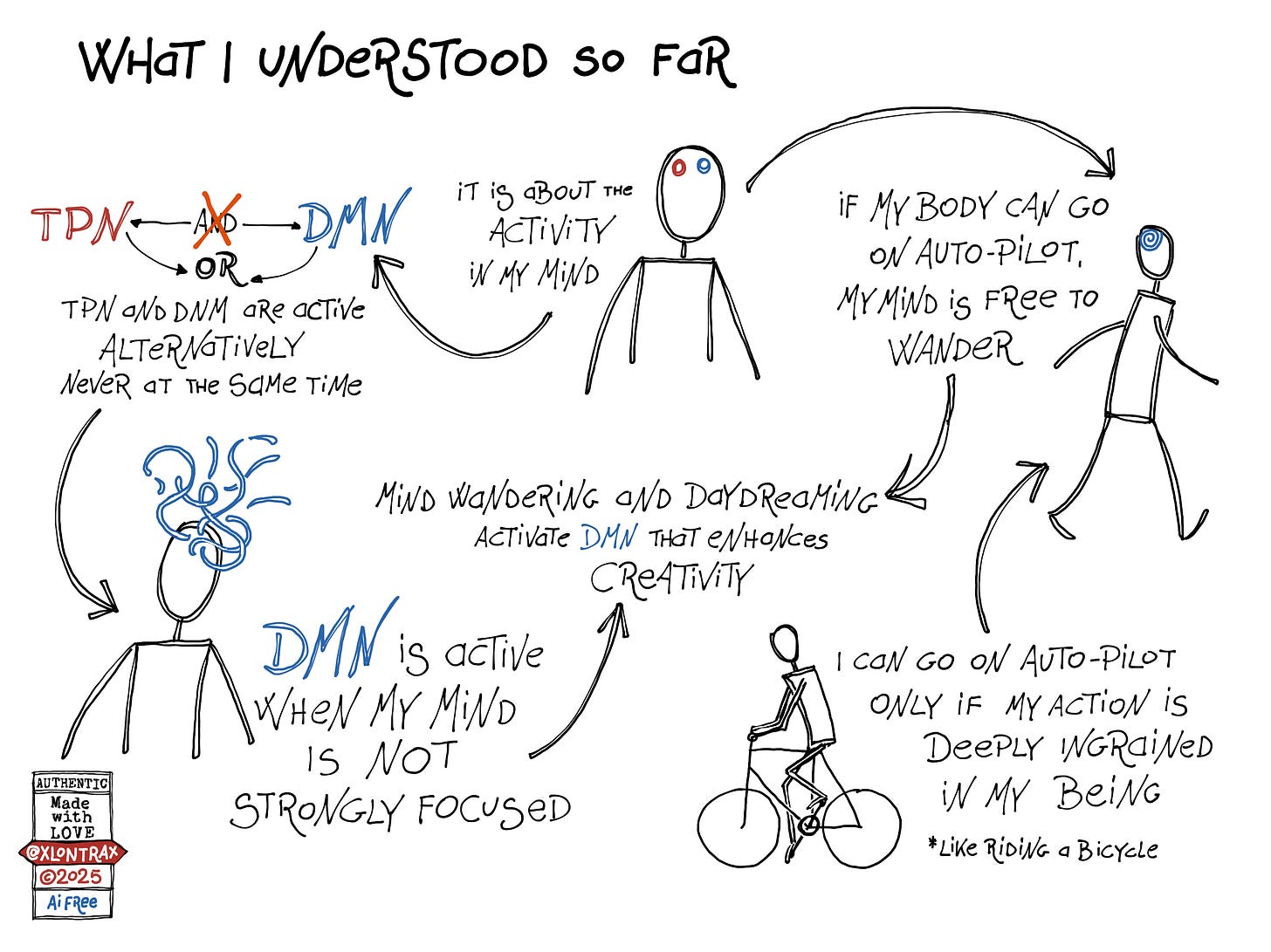
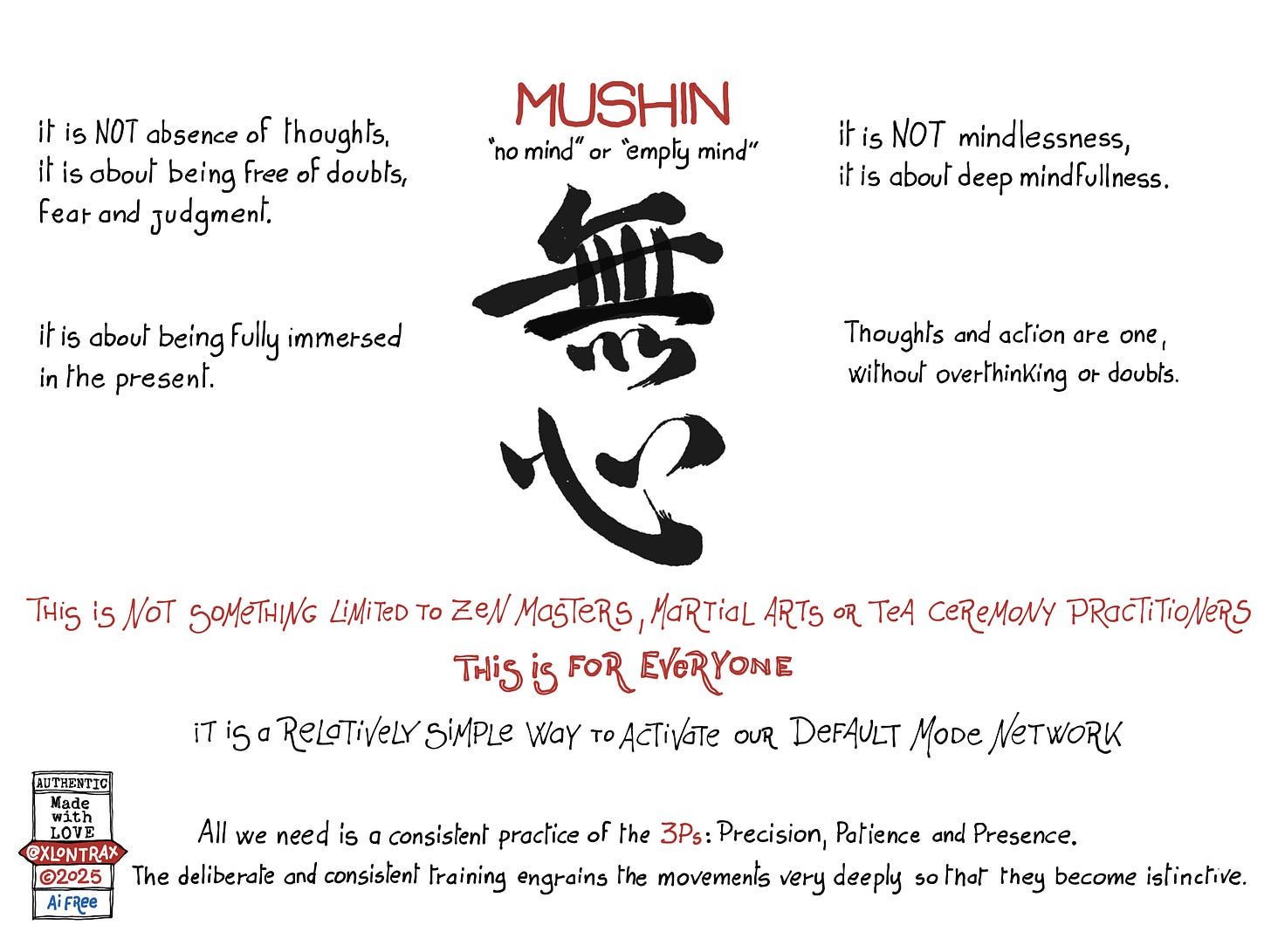

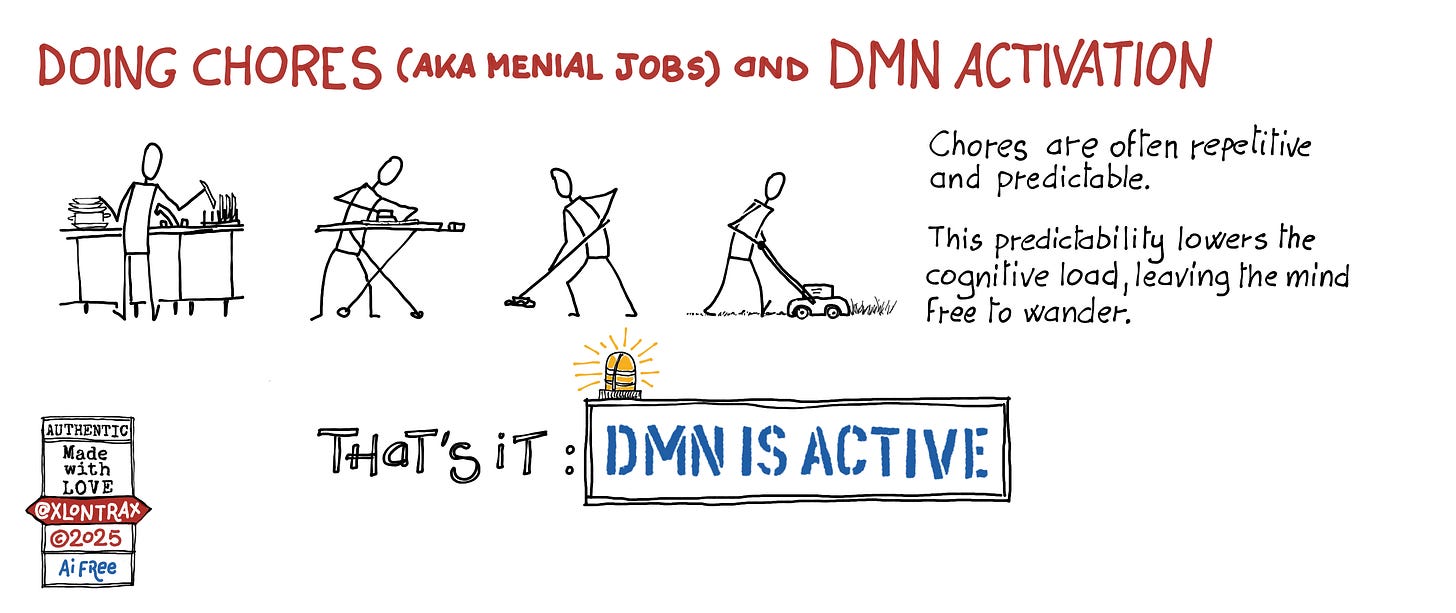
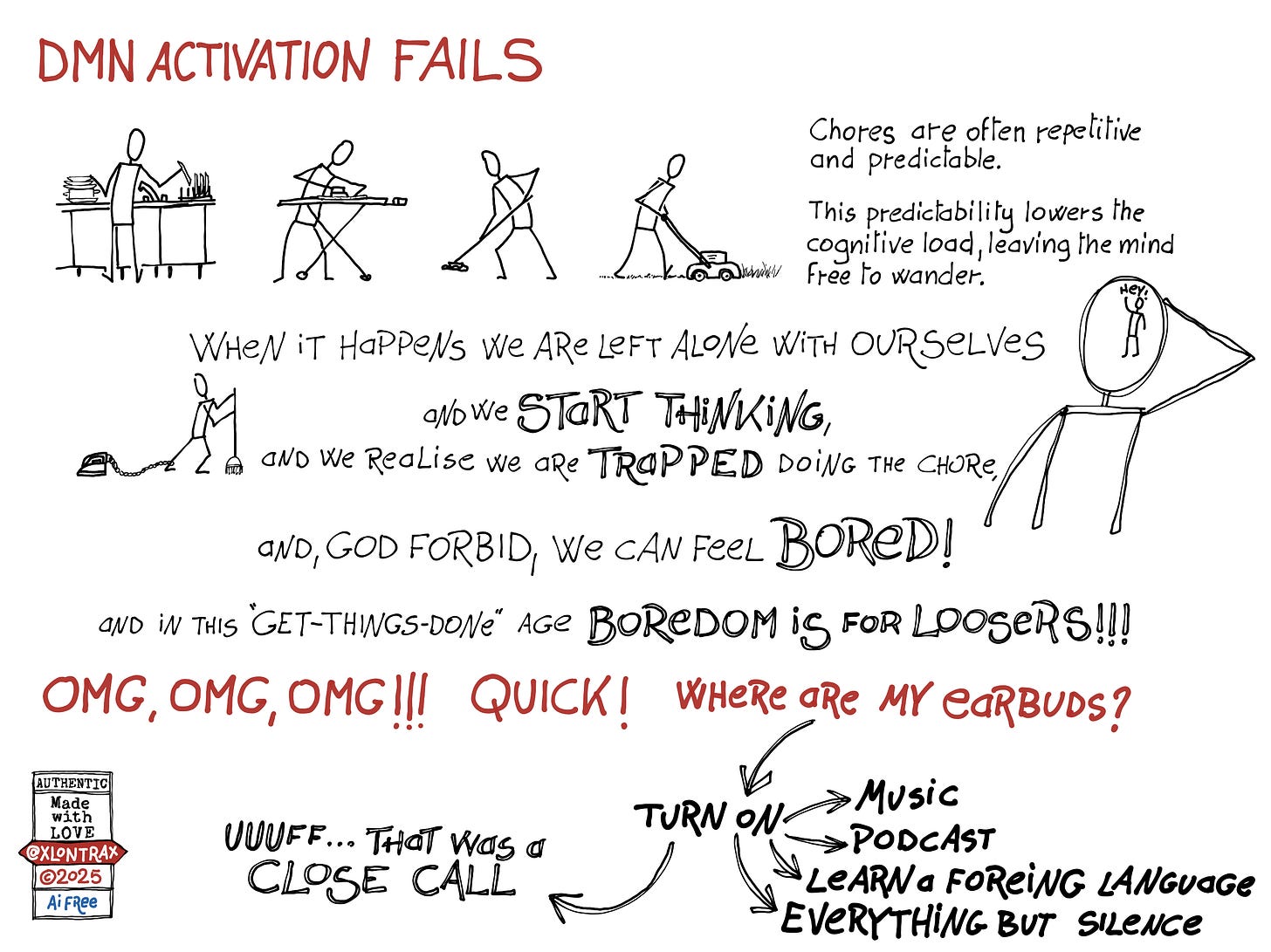
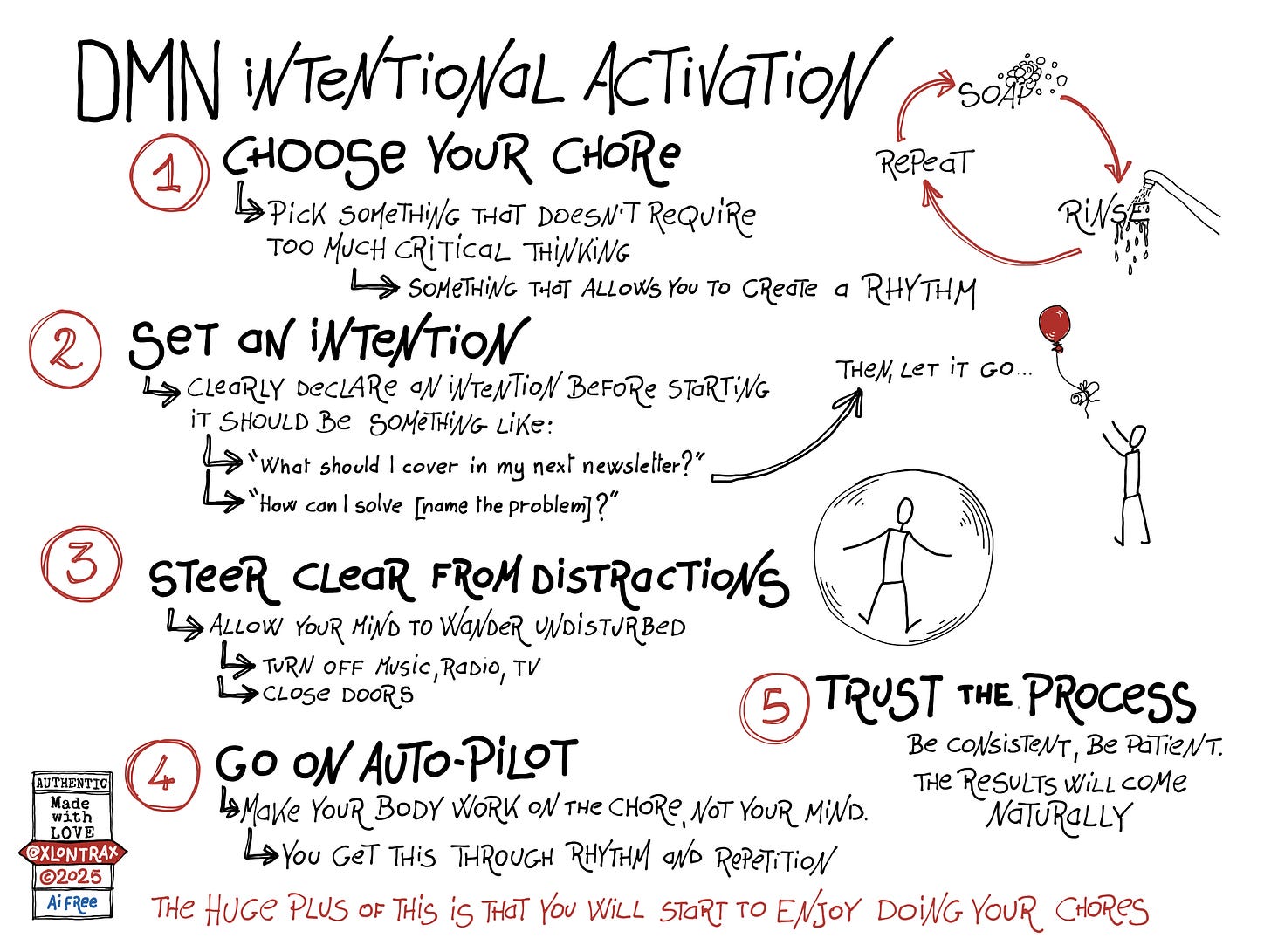
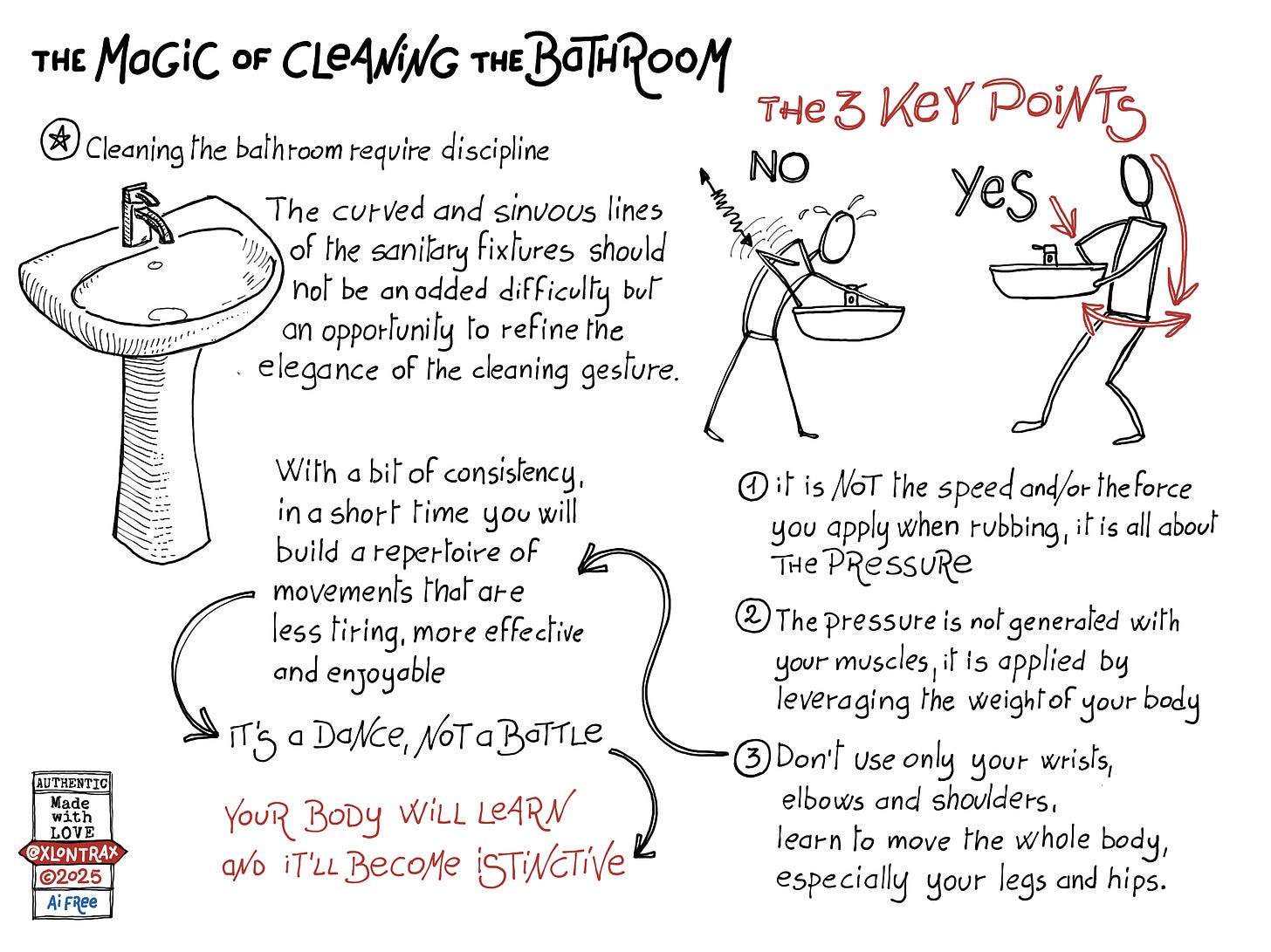

Thanks Mauro. I'm loving connecting with my DMN. I have learned to submit to the DMN - especially when I am unable to find something. I didn't realise that decades ago when I practiced what I then called free range thinking I was actually engaging with my DMN.
Note that engaging with DMN is different from mindfulness; it is more associated with the flow state. It is not about being in the moment, it is about disconnecting with the external world and immersing yourself in an internal world.
My particular interest is in the connection between DMN and stories, social awareness and concept development. Also, how DMN connects with other networks, including the task positive network, to achieve creative solutions, for example, planning a trip, imagining (and discarding) the alternatives, and putting the plan into action.
As you can imagine, DMN is also inclined to get caught up with ruminating which is not always advantageous. It's important to be aware of excessive rumination and that's the time to go to audio books, music and other distractions, including mindfulness, to quieten the DMN.
Recently I came across an inquiry method called Intuitive Inquiry (akin to "going down the rabbit hole"). You might like to look into it for a future post.
Final thoughts - always keep a notebook and pen handy when you engage the DMN.
Regards
Judith
This is excellent and such a good reminder. You would love The Creative Ambush - actually originally in Italian. You would love this book.